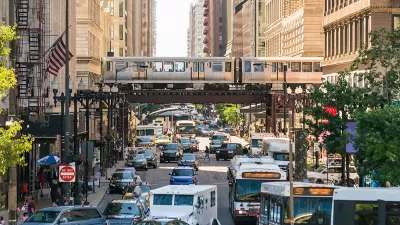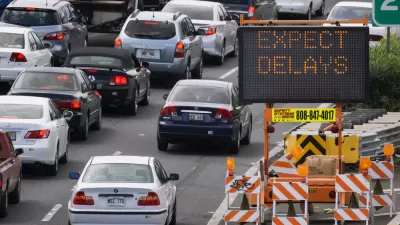It is not, according to Wendell Cox, as posited in a recent article he's written for the website New Geography. Tim Evans looks at Cox's "creative use of Census geography" in his attempts to refute evidence of the growing urban comeback.
Evans sees Cox's recent article as an attempt to "muddy the waters" that demonstrate increased interest in urban living, and struggling far-flung exurbs.
Evans argues that for urban commentators who feel "threatened" by these trends, Wendell Cox and Joel Kotkin among them, "The 'problem'... (and this is only a problem if you're seeking to discredit the notion that there might be people out there who don't want to live in spread-out, single-use, cul-de-sac suburbia) is that people moving back into denser, downtown-style small towns and older suburbs supports the idea of a return to a pre-Interstate Highway-era settlement pattern."
Which brings Evans to Newark. In their efforts to disprove the rise in urban living, "sprawl apologists" define "suburb and exurb" so broadly that it includes everything but the biggest cities. "By doing so, you are effectively taking data that contradicts your preferred narrative and using it instead to bolster that narrative. That's what Joel Kotkin has been doing, and it's what Wendell Cox is doing in this more recent New Geography article. Cox's concept of a 'suburb' is even more inclusive than Kotkin's, capturing not just Jersey City (among others) but Newark, New Jersey's largest city."
FULL STORY: Newark Is Apparently Not a City Either

Study: Maui’s Plan to Convert Vacation Rentals to Long-Term Housing Could Cause Nearly $1 Billion Economic Loss
The plan would reduce visitor accommodation by 25,% resulting in 1,900 jobs lost.

North Texas Transit Leaders Tout Benefits of TOD for Growing Region
At a summit focused on transit-oriented development, policymakers discussed how North Texas’ expanded light rail system can serve as a tool for economic growth.

Why Should We Subsidize Public Transportation?
Many public transit agencies face financial stress due to rising costs, declining fare revenue, and declining subsidies. Transit advocates must provide a strong business case for increasing public transit funding.

How to Make US Trains Faster
Changes to boarding platforms and a switch to electric trains could improve U.S. passenger rail service without the added cost of high-speed rail.

Columbia’s Revitalized ‘Loop’ Is a Hub for Local Entrepreneurs
A focus on small businesses is helping a commercial corridor in Columbia, Missouri thrive.

Invasive Insect Threatens Minnesota’s Ash Forests
The Emerald Ash Borer is a rapidly spreading invasive pest threatening Minnesota’s ash trees, and homeowners are encouraged to plant diverse replacement species, avoid moving ash firewood, and monitor for signs of infestation.
Urban Design for Planners 1: Software Tools
This six-course series explores essential urban design concepts using open source software and equips planners with the tools they need to participate fully in the urban design process.
Planning for Universal Design
Learn the tools for implementing Universal Design in planning regulations.
City of Santa Clarita
Ascent Environmental
Institute for Housing and Urban Development Studies (IHS)
City of Grandview
Harvard GSD Executive Education
Toledo-Lucas County Plan Commissions
Salt Lake City
NYU Wagner Graduate School of Public Service





























